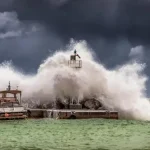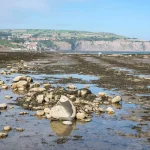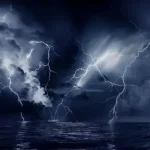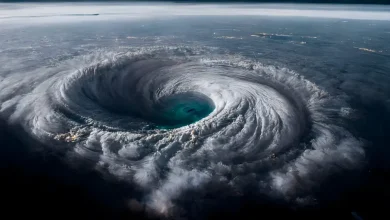Hurricane and Tropical Cyclone: Understanding the Powerful Storm Systems

Hurricanes and tropical cyclones are among the most powerful and destructive weather phenomena on Earth. These massive storm systems can cause widespread devastation, bringing heavy rainfall, strong winds, storm surges, and flooding to the areas they strike.
Although the terms “hurricane” and “tropical cyclone” are often used interchangeably, they refer to the same type of storm, just in different regions of the world. This article explores what hurricanes and tropical cyclones are, how they form, and the impacts they have on the environment and communities.
What is a Hurricane or Tropical Cyclone?
A hurricane and a tropical cyclone refer to the same meteorological phenomenon: a large, rotating storm system that forms over warm ocean waters. The difference between the two lies mainly in the location where the storm occurs:
- Hurricanes develop in the North Atlantic, the northeastern Pacific, and the central Pacific.
- Tropical cyclones form in the South Pacific, the Indian Ocean, and the South-West Pacific.
These storm systems are also known as typhoons when they occur in the northwestern Pacific. Despite the different names, the mechanisms behind these storms are identical.
How Do Hurricanes and Tropical Cyclones Form?
Hurricanes and tropical cyclones form over warm ocean waters in tropical regions, where surface temperatures are at least 26.5°C (80°F). Warm water is essential for the development of these storms because it provides the energy that fuels their growth.
The process of storm formation includes several stages:
1. Tropical Disturbance
The first stage in the formation of a hurricane or tropical cyclone is a tropical disturbance. This is an area of low pressure over the ocean where warm, moist air begins to rise, creating cloud formations and thunderstorms. At this point, the storm has not yet developed strong winds or a defined structure.
 Tsunami: Understanding Nature’s Most Powerful Wave
Tsunami: Understanding Nature’s Most Powerful Wave
2. Tropical Depression
If the conditions are favorable, the tropical disturbance may intensify into a tropical depression. The rising warm air causes a drop in pressure at the surface, and the system begins to rotate. At this stage, the storm’s wind speeds reach between 37 and 62 km/h (23-38 mph), but it has not yet reached hurricane strength.
3. Tropical Storm
As the storm continues to draw energy from the warm ocean, it may strengthen into a tropical storm. Wind speeds increase to between 63 and 118 km/h (39-73 mph), and the storm begins to take on a more organized, circular shape. This is when the storm is given an official name from a pre-determined list of names maintained by regional weather organizations.
4. Hurricane or Tropical Cyclone
When wind speeds exceed 119 km/h (74 mph), the storm officially becomes a hurricane or tropical cyclone. At this stage, the storm exhibits the classic features of a powerful tropical cyclone: a well-defined eye at the center, surrounded by a band of intense thunderstorms and spiraling rainbands.
5. Dissipation
Hurricanes and tropical cyclones eventually weaken as they move over cooler waters or make landfall, where they are cut off from their energy source (warm ocean water). Once the storm loses its strength, it begins to dissipate, but it can still cause significant damage through heavy rains and flooding.
Structure of a Hurricane or Tropical Cyclone
A fully developed hurricane or tropical cyclone consists of several key components:
- The Eye: The center of the storm, typically 20-40 kilometers (12-25 miles) in diameter, where conditions are relatively calm. The eye is surrounded by the eyewall, where the most intense weather occurs.
- The Eyewall: The ring of thunderstorms around the eye that contains the storm’s strongest winds and heaviest rains. This is where the most damaging winds are found.
- Rainbands: Long, spiraling bands of rain and thunderstorms that extend out from the center of the storm. These bands can produce heavy rain, tornadoes, and localized flooding far from the storm’s core.
Categories of Hurricanes and Tropical Cyclones
Hurricanes and tropical cyclones are classified into different categories based on their wind speeds, using the Saffir-Simpson Hurricane Wind Scale. This scale ranges from Category 1 to Category 5, with Category 5 storms being the most powerful and dangerous.
- Category 1: Winds of 119-153 km/h (74-95 mph). Minor damage.
- Category 2: Winds of 154-177 km/h (96-110 mph). Moderate damage.
- Category 3: Winds of 178-208 km/h (111-129 mph). Extensive damage.
- Category 4: Winds of 209-251 km/h (130-156 mph). Catastrophic damage.
- Category 5: Winds of 252 km/h (157 mph) or higher. Catastrophic damage, severe destruction.
Impacts of Hurricanes and Tropical Cyclones
The effects of hurricanes and tropical cyclones can be devastating, especially when they make landfall in populated areas. The main hazards associated with these storms include:
 Ocean Tides: The Rhythmic Movements of the Sea
Ocean Tides: The Rhythmic Movements of the Sea
1. Strong Winds
Hurricanes and tropical cyclones produce extremely strong winds that can cause widespread damage to buildings, power lines, and infrastructure. Wind speeds in the strongest storms can exceed 250 km/h (155 mph), enough to uproot trees, shatter windows, and collapse buildings.
2. Storm Surge
One of the most dangerous aspects of these storms is the storm surge, a rise in sea level caused by the low pressure and strong winds of the storm. When the storm surge coincides with high tide, it can lead to severe coastal flooding, washing away homes, roads, and anything else in its path.
3. Heavy Rain and Flooding
Hurricanes and tropical cyclones bring torrential rainfall that can last for days, causing rivers to overflow and leading to widespread flooding. Even after the storm has weakened, heavy rain can persist, exacerbating flood risks.
4. Landslides
In mountainous or hilly regions, the intense rainfall from a hurricane or tropical cyclone can trigger landslides, which pose additional threats to communities by burying homes, roads, and infrastructure under debris.
5. Tornadoes
In some cases, hurricanes and tropical cyclones can spawn tornadoes as they move inland. While these tornadoes are usually weaker than those formed in traditional tornado-producing storms, they can still cause localized damage.
Preparing for a Hurricane or Tropical Cyclone
In regions prone to hurricanes or tropical cyclones, preparation is essential to minimize the impact of the storm. Authorities often issue warnings and evacuation orders in advance, allowing people to take necessary precautions. Here are some key steps for hurricane preparedness:
- Have an Emergency Kit: Include essentials like food, water, first aid supplies, medications, and important documents.
- Secure Your Home: Reinforce windows, doors, and roofs, and secure any outdoor furniture or equipment that could become projectiles in strong winds.
- Follow Evacuation Orders: If authorities advise you to evacuate, do so promptly. Shelters and safe areas are designated to protect those in the path of the storm.
- Stay Informed: Monitor weather reports and updates from local authorities to stay aware of the storm’s progress and any changes in its path.
Hurricanes and tropical cyclones are formidable natural forces that can cause immense destruction when they strike. Understanding how these storms form, their structure, and the threats they pose is crucial for minimizing their impact. By preparing in advance and taking safety measures, communities can better withstand the challenges brought by these powerful storms.
 Catatumbo Lightning: Witness the Phenomenon
Catatumbo Lightning: Witness the Phenomenon






